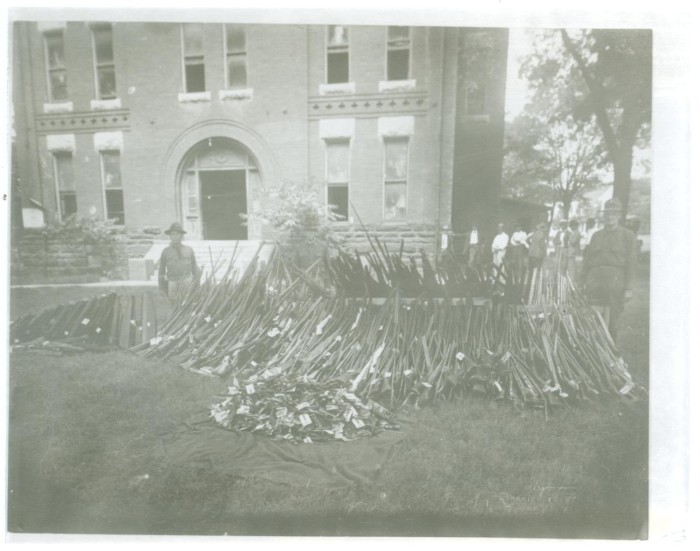It was high summer in Bisbee, and tensions were high. Two years before, posses of policemen and citizens had rounded up hundreds of copper miners and driven them out of town – to New Mexico, in fact – and the federal government was investigating. The year was 1919 and it was early July. The Independence Day parade was set to happen tomorrow, and the 10th Cavalry, made up of World War I veterans, was in town for the event.
While the white officers were attending a dance, the Buffalo soldiers, who were “colored” or black, went to town. The Police chief, with the aid of a police officer, was not comfortable with the soldiers carrying weapons and began disarming them. One of the Tenth Cavalry’s officers informed them that the soldiers were permitted to carry if Chief Kempton didn’t object – but object he did. Instructions were given to leave weapons at camp, but evidently not everyone followed orders.
Later that evening, a confrontation that was certainly influenced by alcohol happened between a white military policeman and five of the Buffalo soldiers. Chief Kempton immediately acted to round up all the Buffalo soldiers and their weapons. A shoot-out street battle on Brewery Gulch ensued.
Ironically, though more than 100 shots were fired, only 8 were shot or wounded – and not all of those by gunfire! The regiment marched in the parade the next day, and no formal charges were brought (despite the surrender of about 50 soldiers!)
Why tell this sordid tale of segregation, guns, and senseless violence? This was one more chapter in the Red Summer of 1919, one that illustrates the tensions, though (thankfully) with less bloodshed.
Unfortunately, there are far too many others still to be told.
